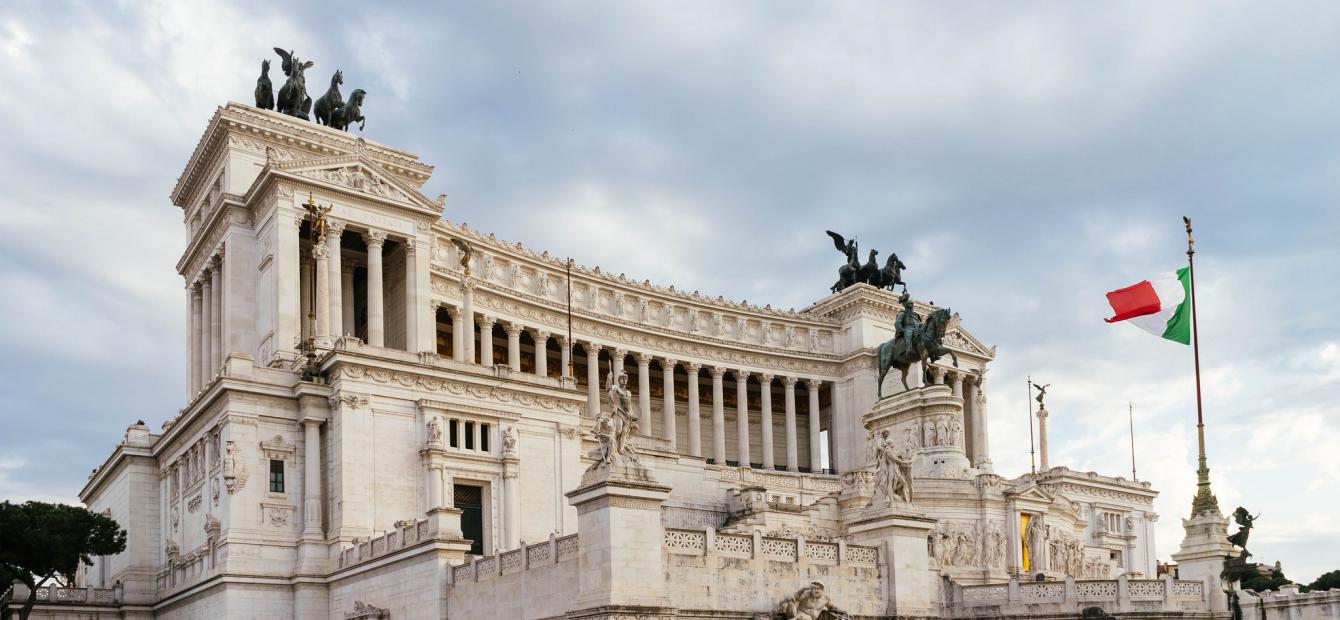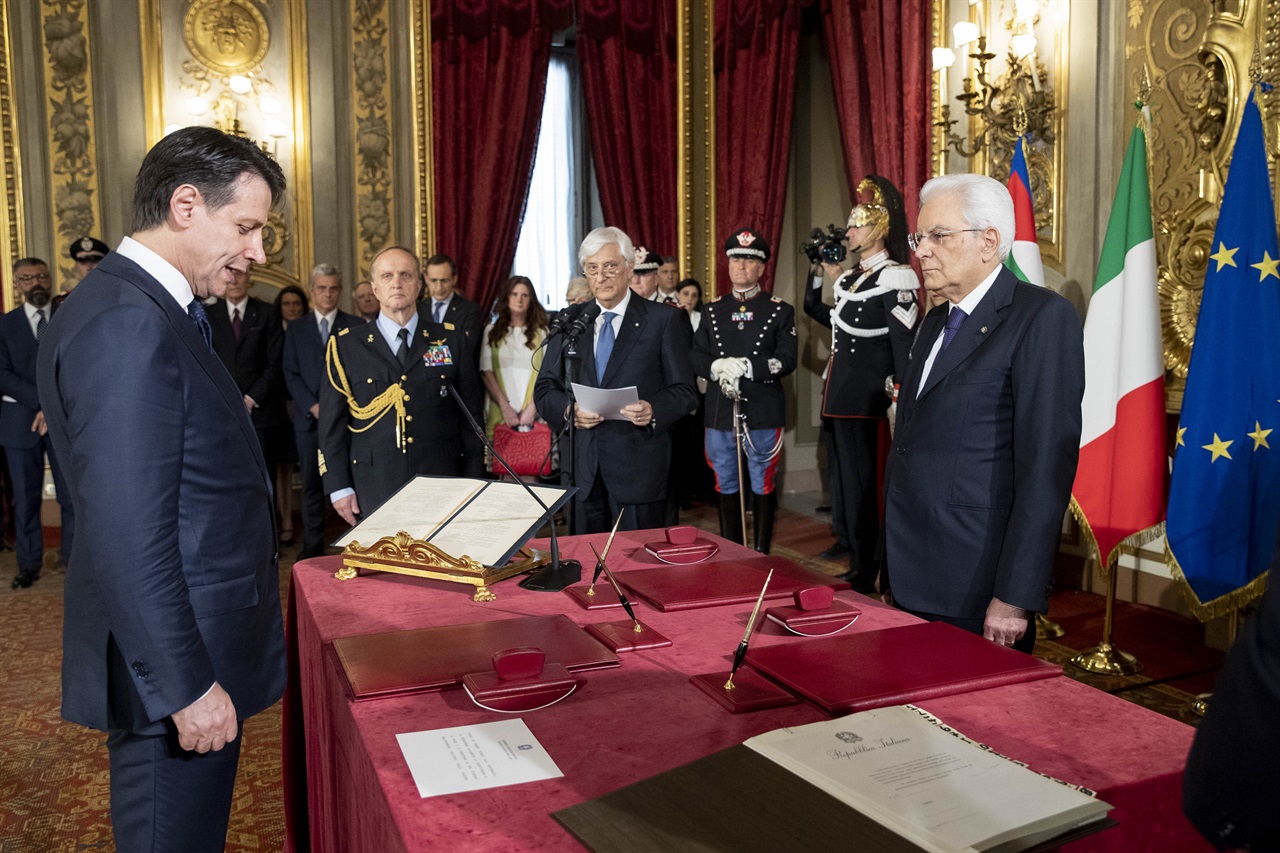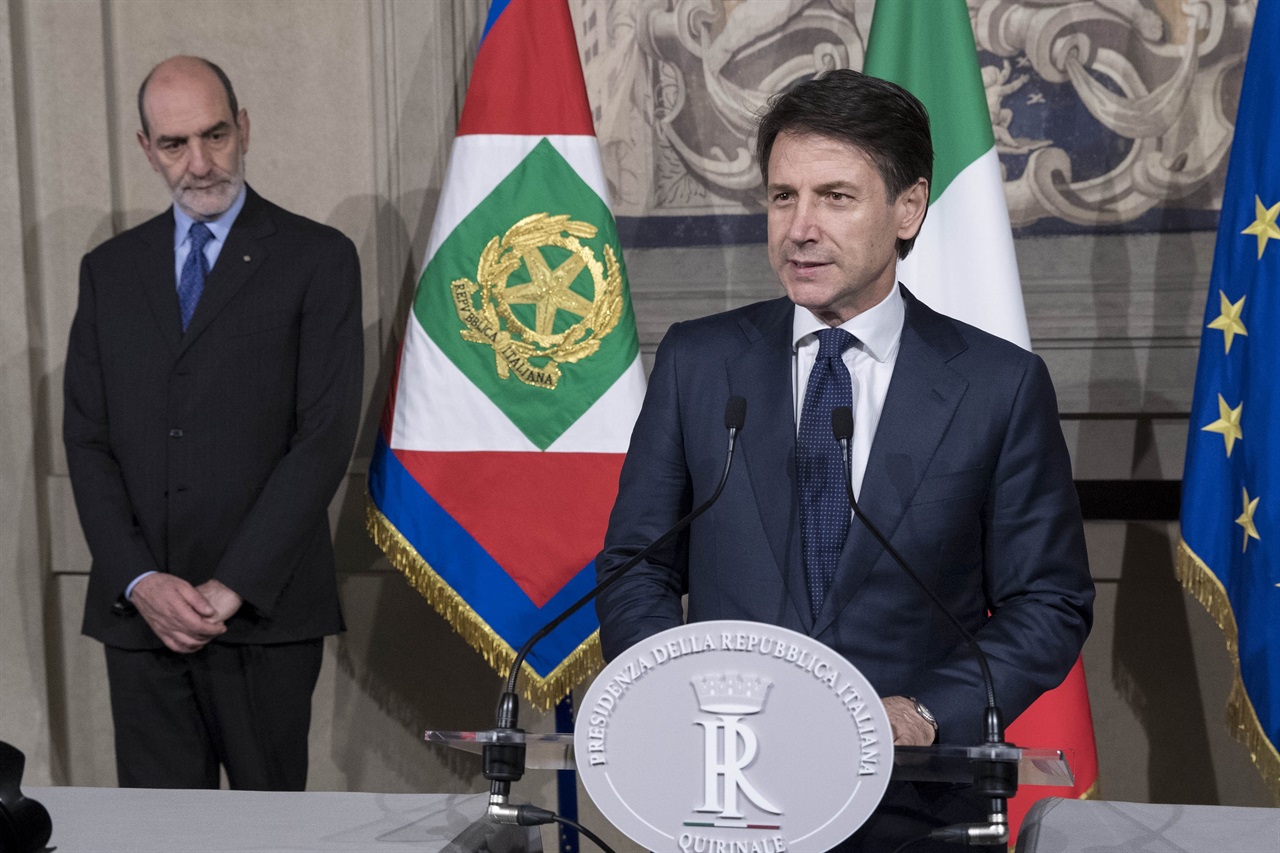
Italy's election: a shock or a shake for the European Union?
On June 1, 2018 the new Italy’s coalition government has been finally sworn in, after a political crisis that lasted 88 days. For almost three months Italians have witnessed an unprecedented series of negotiations between strange bedfellows and sudden twists, which would have been even intriguing, if they had not been potentially detrimental for the country’s economy and overall political stability. At the core of the crisis, there was the European Union (EU) and the role of Italy within the supranational institutions.
This article deals with the likely implications of the recent Italian political crisis for the EU and the challenges it is currently facing. After a brief reconstruction of the main events following the Italian elections of March 4, the article argues that the recent upsurge of Eurosceptic parties in Italy reveals underlying tensions the EU cannot afford to ignore anymore.
The rollercoaster of the post-electoral negotiations
Following the inconclusive elections of March 4, although no party or electoral coalition secured the majority of seats necessary to form a government on its own, at least two parties could claim success. On the one hand, the Five Stars Movement (M5S) became the largest party in Parliament, with 32.7% of votes in the Chamber of Deputies, a +7.2% from 2013 elections; on the other hand, the Lega reached its best electoral result ever, with 17.4% of votes, affirming its leading position within the centre-right coalition – formed also by Forza Italia (FI) and Fratelli d’Italia.
The first impasse was due to the criss-cross vetoes between the M5S and the centre-right coalition, which could count on an overall 41.5% of seats in the Chamber. After an initial convergence between the two dominant political forces in the occasion of the election of the Presidents of the Chamber of the Deputies and the Senate, the M5S affirmed its unwillingness to any agreement with Silvio Berlusconi, leader of Forza Italia, while opening to an alliance with the Lega alone. The failure of the first attempt to make a coalition between the centre-right and the M5S shifted the attention to a possible dialogue between the M5S and the former governing, centre-left Democratic Party (PD) (which dropped by 6.3% from previous election). This, however, waned very soon.
The deadlock seemed to resolve when Lega’s leader Matteo Salvini started a dialogue with M5S’s political chief Luigi Di Maio, after Silvio Berlusconi reluctantly gave the former the green-light to negotiate with M5S detached from the centre-right coalition. This gave the start to a long phase of negotiations between the two parties to draft the “governing contract” and to have it approved by the two parties’ sympathizers. The photos posted on Facebook and other social networks showed that the staffmembers of both parties working on the contract. This made suddenly sink into oblivion the past declarations of the M5S that rejected any possible alliance with such a different party as the Lega. As part of the deal, Di Maio and Salvini proposed to appoint as Prime Minister the unelected and political novice Giuseppe Conte, a university law professor who was given the responsibility to present the list of ministries to President Mattarella.

Europe raises on the top of the political agenda
It was at this point the European Union (EU) was brought into the scene of the Italian political crisis. According to an analysis of party manifestos carried by the Cattaneo Institute[i], the European Union (EU) played a relatively limited role during the electoral debate – the most salient issues being those related to welfare, education, economy, security and migration. Notwithstanding the limited interest for European issues in parties’ programmes, Europe seized the attention of the public debate when a first version of the contract, leaked by a popular online blog, outlined references to procedures to leave the common currency and re-discuss the European treaties. Although the final version of the contract removed any openly Eurosceptic claim, the underlying ideological background of the two allies raised concerns among European leaders and financial markets.
The situation unexpectedly escalated on Sunday May 27, when President Mattarella announced his refusal to certify the appointment of professor Paolo Savona to serve as finance minister, as it could have eroded investors’ confidence on Italian economy. Indeed, in several occasions the 81-years-old economy professor had publicly expressed critic positions on the Euro, while affirming the need to develop a “plan B” to manage a possible Italy’s exit from Euro.
Survey data shows that the Italian public opinion is deeply divided on the EU issue, while the majority of supporters of the governing allies share Eurosceptic feelings
In front of Mattarella’s veto, Salvini and Di Maio called their electorate to a mass mobilisation against the President on June 2 (Republic Day), with the M5S even calling for Mattarella’s impeachment. The following days featured a dramatic boost of tensions in the public debate, divided between those blaming Mattarella’s veto and those defending his choice as being in line with the powers conferred to the President by the Constitution.
While the political situation was becoming inflamed, the spread between German and Italian bonds soared to the highest level in four years. In such uncertainty, Mattarella gave mandate to the economist Carlo Cottarelli to form a technical government.
The situation changed on May 29, when Di Maio made a step back on the calls for impeachment, by opening again to the dialogue with the Lega and asking President Mattarella for one more chance to form a political government led by Giuseppe Conte. The final compromise was achieved with the decision to move the controversial professor Savona to the Ministry for the EU Affairs, thus paving the way to the formation of the first “yellow-green” government between M5S and Lega.
An Eurosceptic government?
As the above chronicle shows, the EU issue has ushered in a harsh institutional conflict that inflamed the political debate. It further complicated the already difficult challenge of forming a coalition government between two peculiar actors of an emerging political landscape in Western countries. Lega and M5S are, indeed, a visible outcome of what Hooghe and Marks (2017)[ii] define a new transnational cleavage, featuring a nationalist pole – promoting the defense of national sovereignty, opposition to immigration, and trade protectionism, and a libertarian, universalistic pole – promoting integration, a welcoming approach to immigrants, and global trade; this divide also often overlaps with the contraposition between those movements challenging the established elites and claiming a more direct democratic respect of “people’s will”, and mainstream parties, which have developed within the mechanisms of representative democracy.

The Italian election is just the last case of electoral success of parties belonging to the sovereigntist-populist pole of this divide, whose analysis, however, would go beyond the scope of this article. Rather, by using data from a recent survey[iii] carried out within the EU-funded EUENGAGE[iv] project, it is possible to examine whether there is an Eurosceptic feeling behind the electoral support to the M5S and Lega.
Overall, only 41% of Italian respondents surveyed in 2017 answered that Italy has, on balance, benefitted from the EU membership; the aggregated data, however, hides profound partisan difference, with values ranging from 77% of PD sympathizers to 33% of M5S, reaching the tipping point among the supporters of the Lega (17%) [Figure 1].
Figure 1. Italy’s membership in the EU (%)
Likewise, the EU is seen by majorities of the supporters of the two governing allies as potentially endangering Italian culture, welfare state, democracy, and especially, economy, whereas this argument is shared by 78% and 81% of, respectively, M5S and Lega’s sympathizers [Figure 2].
Figure 2. The EU endangers some aspects of the nation (% of Strongly agree + Somewhat agree)
The likelihood of an “Italexit” reveals underlying divisions within Italian public opinion, as well. The overall 50% of respondents that would vote to make Italy remain a member of the EU hides huge partisan differences between center-left supporters (92% of PD sympathizers) and those of the two leading parties: respectively, only 37% of M5S supporters and 27% of Lega supporters would choose to remain in the EU.
Figure 3. Likely vote for Italexit Referendum (%)
But what do Italians think about Euro, which has been at the core of the political crisis, with Savona’s controversial appointment? In the 2016 wave of the EUENGAGE survey, respondents were asked whether they agreed or disagreed with the statement that Italy has been better protected from the financial crisis by the common currency than if we had kept the Lira. The question was included in a broader experiment that evaluated also the impact of different ways to frame the euro issue, either as instrument that has made easier the free movement of persons and goods, or as a cause of an increase of prices and reduction of purchasing powers. While the experiment, almost surprisingly, revealed a slight impact of framing on people’s attitudes, the aggregated questions show once again patterns of partisan divisions on the issue: On the one hand, 80% of PD supporters believed in the benefits of the single currency as a shield against the effects of the crisis, as compared to 54% of M5S voters, and 42% of those of the Lega.
Figure 4. Euro has protected Italy from the financial crisis (% of Strongly agree + Somewhat agree)
Taking care of the relationship
Survey data show that the Italian public opinion is deeply divided on the EU issue, while the majority of supporters of the governing allies share Eurosceptic feelings. Indeed, the recent vote results might be interpreted (also) as an expression of an underlying citizens’ unease and dissatisfaction with the current shape of the EU institutions, and its ability to provide satisfactory policy responses in face of the recent migration and economic crises. It is difficult to say whether this dissatisfaction stems from the actual insufficiency of the EU policy solutions or the way issues have been framed in the public discourse; however, there is clear evidence that the EU's shortcomings at critical junctures have inflamed existing Eurosceptic feelings among its citizens. During this prolonged political crisis, Italy has demonstrated, despite all, to hold strong and solid institutions, well-grounded in its constitutional provisions, and that they are actively engaged in the preservation of the supranational commitments.
Nonetheless, in front of this unprecedented Italian political landscape, European policy makers and European leaders should avoid the likely temptation to easily dismiss the recent events as just the latter case of Italy’s political muddle and gridlock. Rather, the EU should take the opportunity of the first really Eurosceptic government among its founding members to start a profound reflection on the challenges and problems of the supranational institutions, and to promote a serious process of reform. The worst mistake the EU could make in this moment would be that of just blaming Italy’s electoral result, rather than to listen to the underlying dissatisfaction for the EU current shape.
If one partner decides to leave the common Home, this should be read also as a likely symptom of a weak, stranded relationship, in which both sides have their faults
Indeed, it seems that the Brexit lesson has taught little to European policy makers: When the majority of British citizens opted for leaving the EU, and broke the taboo of the EU integration, the supranational partner reacted by strongly blaming UK for such a risky and potentially detrimental choice. As it often happens in all relationships, however, “it takes two to tango”: If one partner decides to leave the common Home, this should be read also as a likely symptom of a weak, stranded relationship, in which both sides have their faults.
The EU was created more than 60 years ago and was developed between great ambitions and severe constraints, most of them related to the tensions between intergovernmental and supranational mechanisms of its functioning. Without adequately addressing such tensions, the future of the European project as we know it could be potentially endangered. Now that one of its founding members is sending signals of unease, the EU cannot afford anymore to leave them unheard. Only in this way, what today appears as a turmoil in Italy could turn into a positive shake to revitalize the ambitious project of a supranational European community.
[i] Marco Valbruzzi (in collaboration with Eleonora Erittu and Angelo Vito Panaro), “Che programmi avete per le elezioni? Analisi delle proposte politiche dei partiti”, 6 February 2018.
[ii] Liesbet Hooghe and Gary Marks, “Cleavage theory meets Europe’s crises: Lipset, Rokkan, and the transnational cleavage”, Journal of European Public Policy, vol. 25 (1), 2017. 109-135.
[iii] Online surveys conducted on a sample from an opt-in panel. The first wave of the survey was conducted between June and July 2016; the second wave was conducted between June and October 2017. After removing from the mass sample those interviews completed in less than 50% of the median response time (i.e., a cut-off quality threshold for ‘speeders’), the mass sample was further weighted to reflect the actual demographic composition of the country’s adult population with access to the Internet.
[iv] Project funded by the EU’s Horizon 2020 Research and Innovation programme under grant agreement No. 649281 – EUENGAGE – H2020-EURO-2014-2015/H2020-EURO-SOCIETY-2014.
[v] Question: “Taking everything into consideration, would you say that your country has on balance benefitted or not benefitted from being a member of the European Union?”
[vi] Question: “Some people say the EU might endanger some important aspects of the nation, For each of the following aspects, please indicate to what extent you agree or disagree that they are endangered by the European Union: 1. The integrity of Italian culture; 2. Achievements of the welfare system in Italy; 3. Economic growth in Italy; 4. The quality of democracy in Italy.” Answer options: Strongly agree, Somewhat Agree, Somewhat disagree, Strongly disagree. The figure shows, for each item, results for Strongly and somewhat agree (aggregated).
[vii] Question: “If tomorrow a referendum was called in Italy on Italy’s membership of the EU, how would you vote?”
[viii] Experimental question - the sample was divided into 7 groups, each of them receiving different versions of the question, which manipulated: a. the source of information (independent, governing, or opposition institution); b. the framing of the euro issue (has made free movement of person and goods within the EU easier/has increased the prices of goods and reduced our purchasing power). After having ascertained the effect of the manipulated variable, the 7 respondents’ groups have been combined. Question: “According to a report by (independent experts/an institution linked to the government/an institution linked to the opposition), the euro (has made free movement of person and goods within the EU easier/has increased the prices of goods and reduced our purchasing power). Please indicate whether you agree or disagree with the following statement: Italy would have been better protected from the current financial and economic crisis by the common currency than if we had kept the Lira.” Answer options: Strongly agree, Somewhat Agree, Somewhat disagree, Strongly disagree. The figure shows, for each item, results for Strongly and somewhat agree (aggregated).




0 Comments
Add new comment